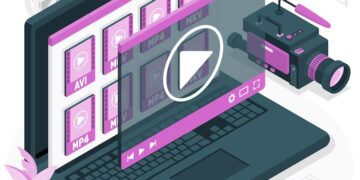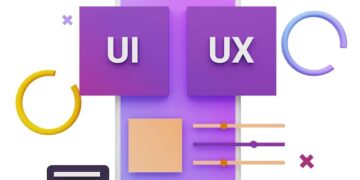Introduction to UX UI Design Services
In today’s highly competitive digital world, user expectations are soaring. Whether you’re launching a mobile app, building a website, or developing enterprise software, the success of your product depends largely on the quality of its user experience (UX) and user interface (UI) design. UX UI Design Services are professional offerings provided by agencies, studios, or freelance designers to help companies create products that are both visually stunning and highly usable. These services encompass research, strategy, design, prototyping, testing, and optimization. In this comprehensive guide, we’ll dive into what UX UI design services include, why they are essential, the benefits they offer, the process involved, and how to choose the right service provider for your needs.
Understanding UX and UI: What’s the Difference?
Though often bundled together, UX and UI are distinct yet complementary disciplines. UX Design (User Experience Design) focuses on the overall feel of the experience. It involves researching user needs, defining user journeys, creating wireframes, testing prototypes, and ensuring every interaction is intuitive and meaningful. UX design is about solving problems, reducing friction, and making the product easy and enjoyable to use. UI Design (User Interface Design), on the other hand, is about how the product looks. It deals with visual elements like typography, color palettes, buttons, icons, spacing, and responsive layouts. UI design makes sure that the product is aesthetically appealing and aligned with the brand’s identity. When done right, UX and UI work together to deliver a seamless, delightful experience that meets both business goals and user needs.
Key Components of UX UI Design Services
Professional UX UI design services typically cover a wide range of deliverables and processes. Here are the key components you can expect:
User Research
This is the foundation of UX. Designers conduct surveys, interviews, usability tests, and analytics reviews to understand user needs, pain points, motivations, and behaviors. Research ensures the product is grounded in real user data rather than assumptions.
Personas and User Journeys
Agencies create personas representing key user segments and map out user journeys that illustrate how users interact with your product across different touchpoints. This helps identify opportunities for improvement.
Information Architecture (IA)
IA is about organizing content and features in a way that makes sense to users. Designers create site maps, navigation systems, and content hierarchies that support intuitive exploration.
Wireframing
Wireframes are low-fidelity layouts that define the basic structure of screens without detailed visual design. They help stakeholders and teams align on functionality and layout before investing in polished UI.
Prototyping
Interactive prototypes simulate how the final product will work. They allow teams to test ideas, gather feedback, and refine interactions before development begins.
Visual Design
UI designers craft the aesthetic look of the product, including colors, typography, iconography, and branding. This ensures visual consistency and appeal across all screens.
Usability Testing
Designers test prototypes with real users to identify issues, validate assumptions, and refine designs. Testing helps catch problems early when they’re cheaper to fix.
Design Systems
For larger projects, agencies may build comprehensive design systems or style guides that ensure consistent UI patterns and reusable components across teams.
Developer Handoff
Designers prepare assets, specifications, and guidelines that make it easy for developers to implement the design exactly as intended.
Ongoing Optimization
Good UX UI design is never “done.” Agencies may offer continuous testing, user feedback collection, and design iteration to improve the experience over time.
Why UX UI Design Services Are Essential
Investing in UX UI design services is no longer optional—it’s essential for any digital product’s success. Here’s why:
Improves User Satisfaction
A well-designed product is easy to use, pleasant to navigate, and solves real problems. This leads to happier customers who are more likely to stay, return, and recommend your product.
Reduces Development Costs
Catching usability issues early through research and testing prevents costly rework during development. Wireframes and prototypes clarify requirements before coding begins.
Increases Conversion Rates
Great design can boost key metrics like sign-ups, purchases, or subscriptions. Thoughtful UX minimizes friction, while polished UI builds trust and credibility.
Strengthens Brand Identity
Consistent, high-quality UI design reflects your brand values and differentiates you from competitors. It shows users you care about quality and detail.
Enhances Accessibility
Professional designers follow accessibility guidelines to ensure your product works for all users, including those with disabilities, expanding your potential audience.
Supports Business Goals
UX UI design is strategic. It aligns user needs with business goals, whether that’s boosting revenue, reducing support costs, or growing engagement.
Types of UX UI Design Services Available
Depending on your needs and budget, there are various ways to access UX UI design services:
Freelance Designers
Ideal for small projects or startups with limited budgets. Freelancers can provide flexible, personalized services but may have capacity limitations for large projects.
Design Agencies
Agencies offer full-service solutions with multidisciplinary teams. They’re great for comprehensive projects needing research, strategy, UX, UI, and testing.
In-House Teams
Larger companies may hire their own designers to maintain tight integration with product and engineering teams. Agencies can still supplement in-house teams on demand.
Specialist Consultants
Some consultants focus on specific aspects like UX strategy, usability audits, or design systems. They can provide expert guidance on targeted challenges.
The UX UI Design Process Explained
While every provider has its own methodology, most UX UI design processes follow these general stages:
1. Discovery and Research
The team learns about your business goals, target users, competitors, and market trends. They may conduct stakeholder interviews, user surveys, analytics reviews, and competitor audits.
2. Strategy and Planning
Based on research insights, the team defines personas, maps user journeys, and prioritizes features. This stage aligns the team on what to build and why.
3. Information Architecture
Designers organize content and functionality into logical structures. Sitemaps, navigation schemes, and content hierarchies are developed to support intuitive user flows.
4. Wireframing
Low-fidelity wireframes show basic layouts and interactions. They help test ideas quickly and align stakeholders on the product’s structure before adding visual design.
5. Prototyping
Clickable prototypes simulate real interactions. These are shared with users for feedback and with developers for feasibility assessments.
6. Visual Design
High-fidelity mockups add branding, color, typography, and visual polish. Designers ensure the look matches your brand and delights users.
7. Usability Testing
Prototypes or beta versions are tested with real users. Designers observe interactions, note issues, and iterate to improve usability.
8. Developer Handoff
Final designs are prepared with detailed specifications, assets, and guidelines to ensure smooth implementation by developers.
9. Iteration and Optimization
After launch, designers can continue to monitor user behavior, gather feedback, and make improvements based on data.
Benefits of Professional UX UI Design Services
Hiring professionals for UX UI design offers significant advantages:
Expertise and Experience
Experienced designers know what works and what doesn’t. They bring best practices, industry standards, and creative ideas to your project.
User-Centered Approach
Professionals put users first. Their process ensures you’re solving real user problems, not just making assumptions.
Quality and Consistency
Agencies and skilled freelancers maintain high standards across screens and devices. Consistent design builds trust and enhances brand value.
Faster Time to Market
Clear, well-validated designs reduce back-and-forth with developers, making projects more efficient and predictable.
Competitive Advantage
A superior user experience can set you apart in crowded markets. Investing in design gives you a long-term edge over competitors who overlook it.
Trends in UX UI Design Services
The field of UX UI design is constantly evolving. Here are some trends that modern agencies and designers are embracing:
Dark Mode
More products offer dark mode options for user comfort and battery savings.
Microinteractions
Small animations and feedback signals delight users and clarify functionality.
Voice Interfaces
Designing for voice assistants and speech interactions is becoming mainstream.
Inclusive Design
There’s growing emphasis on accessibility and designing for diverse needs and abilities.
AI-Powered Personalization
Designers are leveraging AI to tailor experiences to individual users.
Minimalism and Clarity
Clean, focused interfaces reduce cognitive load and improve usability.
Design Systems and Component Libraries
Reusable design patterns support consistency and scalability in large products.
How to Choose the Right UX UI Design Service Provider
Selecting the right partner is crucial. Here’s what to consider:
Portfolio and Case Studies
Look for providers with proven results in your industry or similar challenges. Their work should demonstrate both creativity and usability.
Process and Methodology
Ask about their design process. A strong process indicates a strategic, user-centered approach.
Team and Skills
Check if they have specialists for research, UX, UI, prototyping, and testing. A multidisciplinary team delivers better results.
Communication and Collaboration
Good design is collaborative. Choose a partner who listens, explains their decisions, and welcomes feedback.
Budget and Timeline
Be clear about your budget and deadlines. Find a partner who can deliver quality work within your constraints.
Client Reviews and References
Look for testimonials, reviews, or direct references to verify the provider’s reliability and quality.
Conclusion: Why Investing in UX UI Design Services Pays Off
In an era where users have endless choices and short attention spans, the quality of your product’s design can make or break its success. Professional UX UI design services help you understand your users deeply, craft intuitive and beautiful interfaces, and deliver experiences that delight and convert. Whether you’re launching a startup, redesigning an existing app, or building enterprise software, investing in expert design is an investment in your business’s future. It reduces development risks, improves customer satisfaction, and strengthens your brand. By choosing the right UX UI design service provider, you set your project up for success and ensure your users keep coming back for more.

























